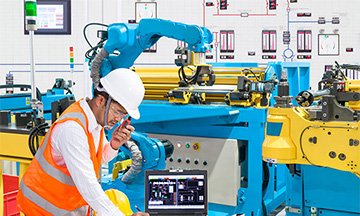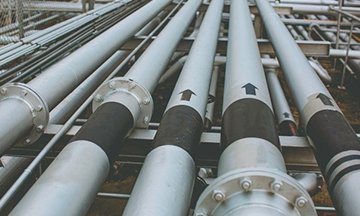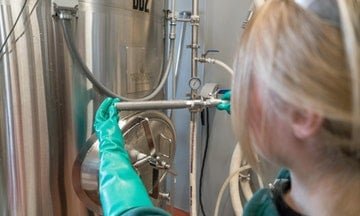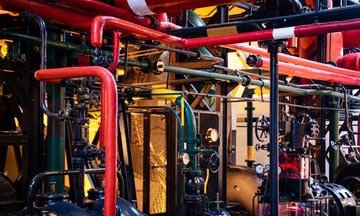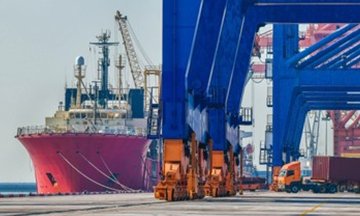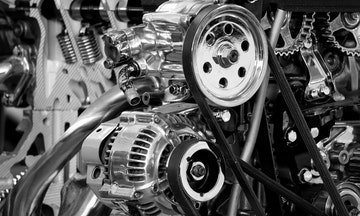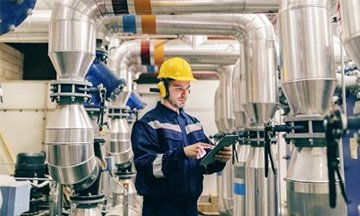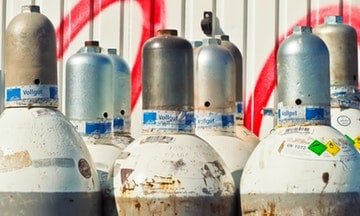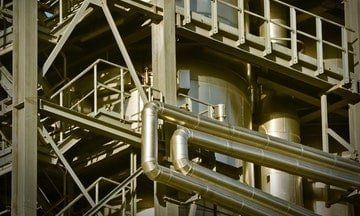Condition Monitoring Engineer Training Course
| Date | Format | Duration | Fees | |
|---|---|---|---|---|
| 29 Apr - 03 May, 2024 | Live Online | 5 Days | $2250 | Register |
| 17 Jun - 28 Jun, 2024 | Live Online | 10 Days | $4495 | Register |
| 04 Aug - 08 Aug, 2024 | Live Online | 5 Days | $2250 | Register |
| 08 Sep - 12 Sep, 2024 | Live Online | 5 Days | $2250 | Register |
| 25 Nov - 29 Nov, 2024 | Live Online | 5 Days | $2250 | Register |
| 16 Dec - 27 Dec, 2024 | Live Online | 10 Days | $4495 | Register |
| Date | Venue | Duration | Fees | |
|---|---|---|---|---|
| 06 May - 10 May, 2024 | Dubai | 5 Days | $4750 | Register |
| 20 May - 24 May, 2024 | Johannesburg | 5 Days | $4950 | Register |
| 03 Jun - 14 Jun, 2024 | Kigali | 10 Days | $9150 | Register |
| 24 Jun - 28 Jun, 2024 | Dubai | 5 Days | $4750 | Register |
| 08 Jul - 12 Jul, 2024 | Dubai | 5 Days | $4750 | Register |
| 21 Jul - 25 Jul, 2024 | Riyadh | 5 Days | $4950 | Register |
| 19 Aug - 23 Aug, 2024 | Dubai | 5 Days | $4750 | Register |
| 09 Sep - 13 Sep, 2024 | Dubai | 5 Days | $4750 | Register |
| 22 Sep - 26 Sep, 2024 | Jeddah | 5 Days | $4950 | Register |
| 07 Oct - 11 Oct, 2024 | Dubai | 5 Days | $4750 | Register |
| 11 Nov - 15 Nov, 2024 | Dubai | 5 Days | $4750 | Register |
| 02 Dec - 13 Dec, 2024 | Mumbai | 10 Days | $9375 | Register |
| 23 Dec - 27 Dec, 2024 | Dubai | 5 Days | $4750 | Register |
Course Overview
What is Condition Monitoring Engineer?
The primary role of a Condition Monitoring Engineer usually revolves around monitoring a system, asset, or vehicle in semi-real time. This helps detect failure modes and use the data to predict the malfunctions before they occur. This course consists of a combination of reliability improvement through precision maintenance practices, condition monitoring, and root cause failure analysis to train its participants on the best comprehensive approaches to reducing maintenance costs and improving the availability of assets.
Why do we need condition monitoring?
Why should one participate in this “Certified Condition Monitoring Engineer Course”? Most companies in the mining, utilities, oil & gas, and government industries now require their staff to have a certain level of certification to perform tasks like data collection, analysis and interpretation, prognosis, and recommendation for corrective action. The requirement to be certified is being driven by the need to reduce operating costs, reduce downtime, and manage operational risk.
This Zoe training course will provide you with comprehensive and professional experience to understand the operations of predictive maintenance and enable the optimisation of resources.
Course Objectives
Upon completing this Certified Condition Monitoring Engineer Course successfully, participants will be able to:
- Identify and explain the advantages of Condition Based Monitoring
- Learn how to select particular maintenance strategies
- Outline effective methodologies for implementing Condition Monitoring Techniques
- Classify the best maintenance strategy for different types of equipment
- Explain the strengths and weaknesses of condition monitoring
- Exhibit an awareness of international condition monitoring standards and understand how this can be applied across domains
- Understand the interaction between the infrastructure and techniques for monitoring the interfaces
Training Methodology
This collaborative Certified Condition Monitoring Engineer Course will comprise the following training methods:
- Lectures
- Seminars & Presentations
- Group Discussions
- Assignments
- Case Studies & Functional Exercises
Like all our other training programs, this course also follows the ‘Do-Review-Learn-Apply’ model.
Organisational Benefits
Organisations who send their employees to participate in this Certified Condition Monitoring Engineer Course can benefit in the following ways:
- Benefit from training your employees on the definition and importance of mechanical information
- Understand the different roles played within the Condition Monitoring Engineering guidelines
- Learn and apply standards in equipment identification, equipment design features analysis, equipment performance calculations, safe operation and monitoring of equipment, and equipment maintenance
- Delegates will be able to apply the gained knowledge through this course
- Delegates will be able to practice skills that will impact their respective companies
- Maintain better organisational safety records
Personal Benefits
Individuals who participate in this Certified Condition Monitoring Engineer Course can gain from it in the following ways:
- Improve your career opportunities and increase your ability to work across worldwide industries like oil and gas, automobile, production, construction, aeronautics, etc.
- Secure a relevant job anywhere in the world with the right knowledge in Condition Monitoring Engineering
- Get promoted in your current job in the Condition Monitoring Engineering field
- Acquire the professional skills and knowledge required to accomplish your tasks with optimal competence and accuracy
- Master the knowledge and techniques to see the future of an effective Condition Monitoring Engineering process
- Discover how to work well with your machines and the risks of not being able to operate them accurately
- Contribute to your organisation by being knowledgeable enough to determine the need for a program/process at your workplace or understand an existing program better
- Get an opportunity to work through hands-on exercises in detail to gain the skills needed to facilitate a Condition Monitoring Engineering study
- Gain the skills to plan, manage, facilitate, and scribe for a Condition Monitoring Engineering project
Who Should Attend?
This Certified Condition Monitoring Engineer Course would be suitable for:
- Condition Monitoring Engineers
- Condition Monitoring Program Leaders Mechanics
- Reliability Engineers
- Operators
- Service Technicians
- Technical Managers
- Plant Managers
- Maintenance Managers
- Others who work in the Maintenance and Production departments
Course Outline
Module 1: Understanding Maintenance Philosophies
- Breakdown or run-to-failure maintenance
- When is it economically justifiable?
- Understanding risk
- Minimising risk
- Reliability, condition monitoring, and insurance
- Improving the bottom line
- Cut maintenance costs or improve OEE?
Module 2: Scheduled or Calendar-based Maintenance
- Why do machines fail?
- Is there a substantial flaw in this method?
- MTBF and MTBR
- The P-F curve
Module 3: Predictive or Condition-based Maintenance
- The benefits
- Planned vs. unplanned maintenance
- Is your plant ready?
Module 4: Precision or Reliability Centred Maintenance
- The theoretical difference
- The benefits
- Is your plant ready?
- Understanding OEE
Module 5: Improving Reliability
- Taking care of the simple things
- Bearing and seal installation
- The importance of precise installation and operation
Module 6: Precision Shaft and Belt Alignment
- The importance of precision alignment
- What is misalignment?
- How to identify misaligned machines
- Shaft and belt alignment techniques
- Using dial indicators
- Using laser-based systems
- Correcting soft foot
- Dealing with thermal growth
Module 7: Precision Balancing
- The importance of balancing
- What is unbalance?
- Identifying unbalanced machines
- An overview of the balancing process
- Single-plane balancing
- Two-plane balancing
- In-situ versus shop balancing
- Balance grades (ISO standards)
Module 8: Resonance Control
- What is resonance?
- How common is resonance?
- An overview to detecting resonance
- An overview to correcting resonance
Module 9: Improving Lubrication
- Understanding lubrication
- The importance of lubrication
- Contamination control
- Acceptance testing
- FMECA
- Root cause failure analysis
Module 10: Condition Monitoring Overview
- Overview of condition monitoring
- Is condition monitoring necessary if you develop reliability?
- Vibration analysis
- The time waveform
- Spectrum analysis
- Overall level measurements
- How to collect vibration readings
Module 11: Introduction to Diagnosing Elements
- Implementing a diagnostics program
- Using portable analysers, online monitoring systems, and protection systems
- Oil analysis
- What information can be revealed?
- What do the different tests mean?
- Contamination, elemental analysis, oil cleanliness, particle counting
- Wear particle analysis
- Why is it needed?
- Relating particle size, shape, and colour to machinery components
Module 12: Infrared Analysis or Thermography
- Understanding thermography
- Spot temperature
- Flawed measurement techniques
- Infrared image analysis
- Being aware of emissivity and environmental conditions
- Understanding resolution and focal length
Module 13: Ultrasound or Acoustic Emission
- How does it work?
- Using ultrasound on mechanical and electrical systems
Module 14: Electric Motor Testing
- Vibration analysis and motor current analysis
- Rolling element bearing testing
- Using ultrasound testing, vibration analysis, and oil analysis to detect bearing faults
Module 15: Performance Monitoring
- Incorporating performance monitoring with condition monitoring
- Merging plant inspections with condition monitoring
Module 16: Condition Monitoring Technologies and ISO and ASNT Standards
- Training and certification
- The importance of plant-wide training



